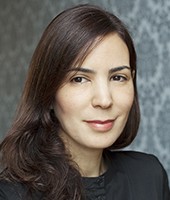Isabel Sanchez Ramos
EURIAS Fellow
Isabel Sánchez is a consolidated specialist in Archaeology of Late Antiquity and Early Medieval periods. She focus her main research line in the knowledge of landscape transformations of ancient Roman cities in Western Europe between the collapses of Roman Empire to the early medieval times (AD 4th-8th centuries). She has gotten several long-term PhD fellowships and competitive research contracts at internationally renowned institutions like Spanish Research Council at Rome, Centre Camille Jullian at Aix-en-Provence, University of Barcelona and Ausonius Institute, among others. Her career is involvement on international research projects too, and she leads the IdaVe Project at Idanha-a-Velha (Portugal). She has solid professional experience in Archaeological Heritage Management, transferring and organising R&D activities, public dissemination, and in Cultural Heritage projects. She had been invited to participate in several congresses, meetings and various conferences around Europe. Her studies are supported by publications in Spanish and international high–impact factor journal articles (29), chapter of books (49), books (10), books edited (3), reviews (22) and invited talks (49).
Research interests
Landscape Archaeology; Social identities; Power and local communities; Barbarians kingdoms; Architecture of power, burials, secular and religious elites’ buildings, sculpture and epigraphy; Christian landscapes, including topography and cultural evidence of Visigoth Kingdom established in Southern Gaul and the Iberian Peninsula; Multi-task approach and the use of new technologies for Archaeology
Topographies of power. The Episcopal territory at the beginning of the medieval landscapes
Christianity was one of the most influential phenomena in transforming urban societies in Late Antiquity. The spread of early Christianity throughout the territories of the future Europe was essentially based on the establishment of bishoprics, materialized in the construction of large episcopal groups. As bishoprics were the new centres of power, it is key to learn about them to understand the development of medieval cities in Europe and the western Mediterranean. The ultimate and overall aim of this research is to generate new scientific knowledge of the historical cities complexity and make progress in the research of public architecture that corresponds to religious and civil complexes. The goal of this specific project is twofold: to reflect upon the transformation of the classical city into a Christian and medieval town in the Western Mediterranean, and to enhance the knowledge of both the scientific community and the wider public interested in ecclesiastical ensembles and urban landscapes. I intend to find answers to various archaeological questions on some urban religious and palatial structures, particularly regarding their spatial location, interpretation and chronology. Among the Late Antique Episcopal groups documented by archaeologists in present-day Western Europe, I will focus on Egitania (Idanha-a-Velha, Portugal). The main novelty of my approach to the study of Late Antique landscape is the use of the latest 3D technologies, geosciences, remote sensing petrography and microscopic mortar analysis.
Key publications
Idanha–a–Velha. Portugal. 2. Paço dos Bispos de Idanha–a–Velha, Campaña de excavación 2014, avec J. Morín de Pablos, Madrid, 2015.
« Toletum urban landscape in Late Antiquity », Antiquité Tardive, n° 23, 2015, p. 329–352.
Topografía cristiana de las ciudades hispanas durante la Antigüedad tardía (Christian topography of Hispanic Cities during Late Antiquity), British Archaeological Reports, International Series n° 2606, Oxford, Archaeopress, 2014.
« Episcopal groups in Hispania » (with Joseph Maria Gurt i Esparraguera), Oxford Journal of Archaeology, n° 30, n° 3, 2011, p. 273 – 298.
|
Workshop organized by I. Sánchez (U. Madrid / 2016-2017 Paris IAS fellow), B. Dumézil (U. Paris Nanterre) and P. Poveda (U. Salamanque), with the support of the Paris IAS Talk by I. Sanchez, 2016-2017 Paris IAS fellow Talk by I. Sanchez Ramos, Paris IAS fellow Talk by I. Sanchez Ramos, Paris IAS fellow Talk by I. Sanchez Ramos, Paris IAS fellow |
|
Instituto de Arqueología – Mérida IEA de Paris |
|
|


